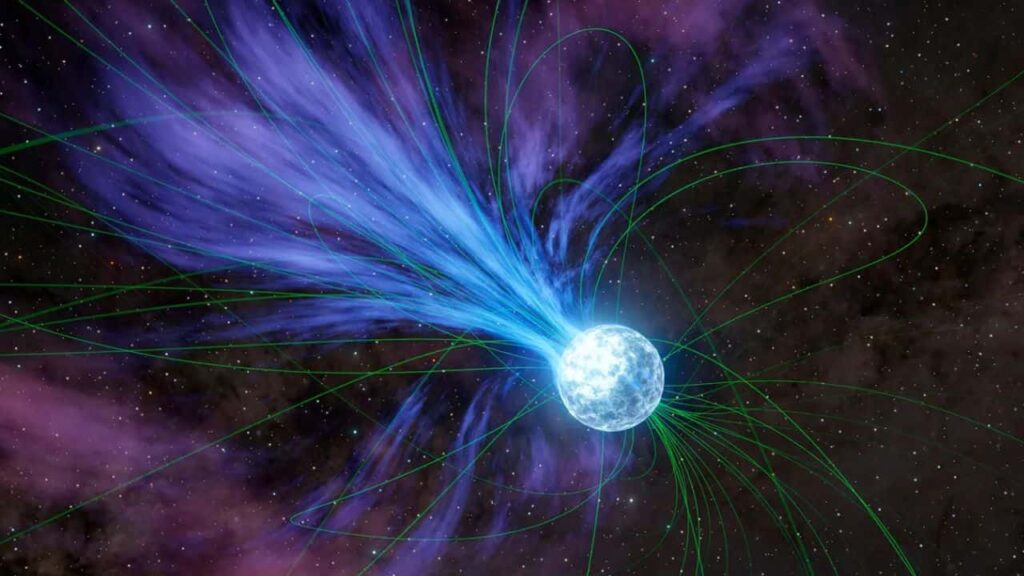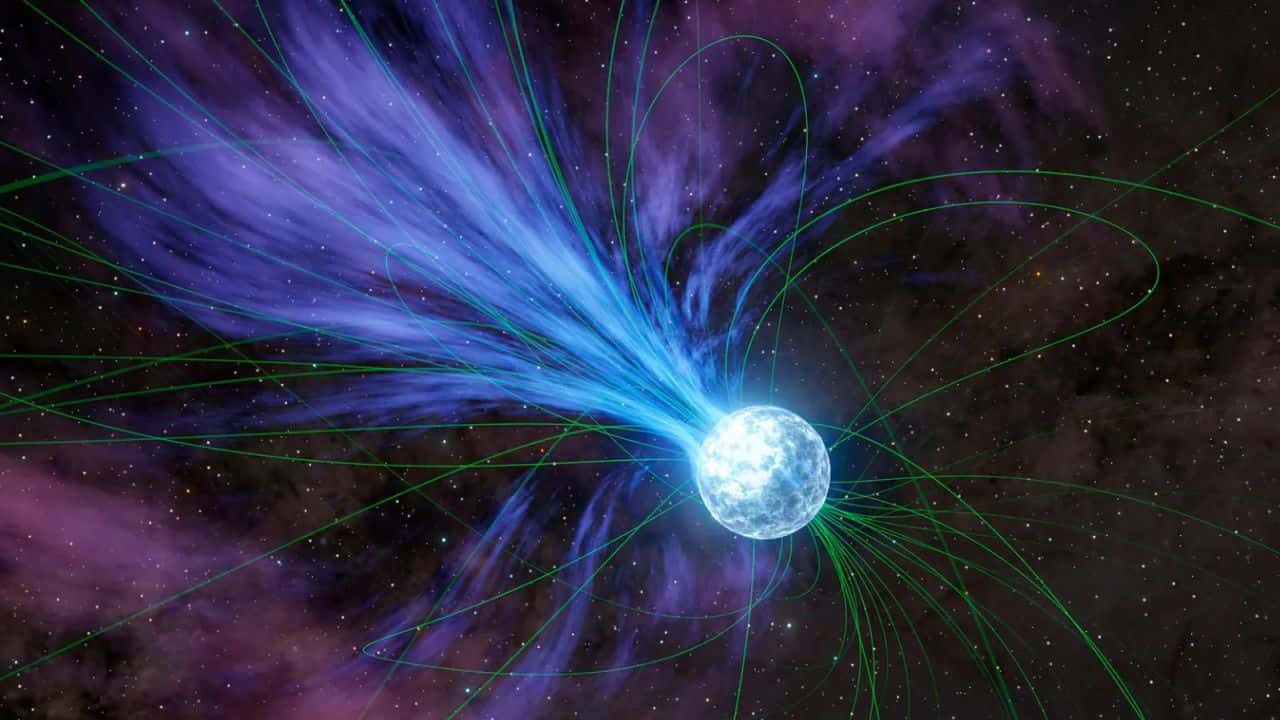Researchers employing two of the space agency’s X-ray observatories have closely monitored the unpredictable activities of a neutron star as it emitted a luminous, short-lived flash of radio waves.

Deciphering the Origins of Deep Space Radio Bursts
The mystery behind sudden, intense bursts of radio waves emanating from the depths of space might be closer to being solved, thanks to observations from two of NASA’s X-ray telescopes. These instruments captured a fast radio burst—both before and immediately following its occurrence—providing an unparalleled opportunity for scientists to unravel the mysteries of these powerful cosmic phenomena.
Despite their fleeting nature, lasting only milliseconds, fast radio bursts can unleash as much energy as the Sun does over an entire year, emitting light in a focused beam, distinguishing them from other more random cosmic explosions.
Locating the source of these bursts has been challenging due to their brief duration. Before 2020, identified sources of such bursts were extragalactic, beyond the observational reach to ascertain their origins. However, a breakthrough came with a burst originating from within the Milky Way, traced back to a magnetar—a highly dense remnant of a supernova.
In October 2022, this same magnetar, known as SGR 1935+2154, was observed emitting another fast radio burst. NASA’s NICER and NuSTAR telescopes, positioned on the International Space Station and in low Earth orbit, respectively, monitored the magnetar before and after the burst, offering insights into the event’s precursors and aftermath. This collaboration between telescopes has been instrumental in following up on ephemeral cosmic events, as highlighted in a study published on February 14 in Nature.
Unusual Spin Dynamics Observed
The burst was detected amidst two “glitches,” instances where the magnetar’s rotation accelerated suddenly. SGR 1935+2154, with a diameter of about 12 miles and rotating approximately 3.2 times per second, demonstrated a dramatic shift in speed, decelerating more rapidly than previously recorded. This phenomenon intrigued researchers, suggesting that these adjustments in speed might be connected to the mechanisms behind fast radio bursts.
The Physics of Magnetars and Fast Radio Bursts
Understanding how magnetars generate fast radio bursts is complex, given their extreme density and gravitational force. For instance, the material from a magnetar is so dense that a teaspoonful would weigh around a billion tons on Earth. This density results in a strong gravitational pull, making the magnetar’s surface highly volatile and prone to emitting bursts of X-rays and gamma rays.
Before the 2022 fast radio burst, increased X-ray and gamma-ray activity was detected from the magnetar, leading mission operators to direct NICER and NuSTAR for closer observation. The study suggests that changes during the magnetar’s deceleration phase might have created the conditions necessary for the fast radio burst.
Potential Mechanisms for Burst Generation
The study proposes that the magnetar’s exterior and superfluid interior might occasionally become misaligned, causing energy transfer to the crust and potentially triggering the observed phenomena. If a surface crack occurred due to an initial glitch, it could have expelled material into space, thereby explaining the rapid slowdown.
Despite this real-time observation, the exact causes of fast radio bursts remain elusive, with further data needed to solve the puzzle fully.
Mission Overview
NuSTAR, a Small Explorer mission led by Caltech and managed by NASA’s Jet Propulsion Laboratory, was developed in collaboration with international partners. The mission’s operations are based at the University of California, Berkeley, with a data archive located at NASA’s Goddard Space Flight Center. This mission exemplifies the collaborative effort in understanding cosmic phenomena and enhancing our knowledge of the universe.
Other Links-
- Love in Space- US to Launch Next Moon Mission on Valentine Day
- NASA Unveils a Mind Blowing Super Earth 137 Light-Years Away
- NASA Reveals: Earth& Cosmic Twin Uncovered?
- NASA Launches PACE Mission to Study Oceans and Atmosphere










